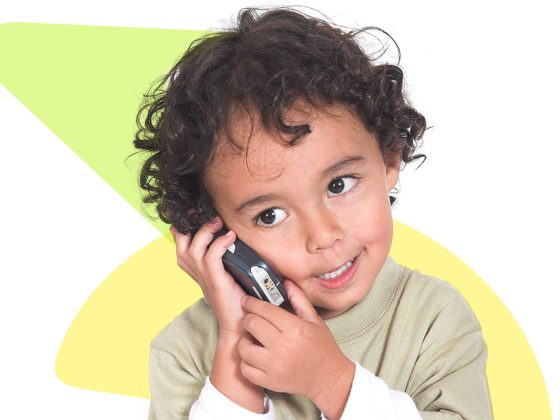
Ages & Stages: Talking
Develop a child's language skills at any age with these tips.
There are so many opportunities to talk with little ones all day long as they grow.
Newborns to 3-month-olds may:
- tell one person’s voice from another’s
- tell speech from other sounds
- begin to remember things
So you can: Talk to baby a lot! Look her in the eye. Enjoy her responses: a waving arm, a smile, kicking legs, and so on. Talk back using words (“What a strong arm!” “Thanks for that sweet smile!”).
3-to-6-month-olds may:
- copy sounds and movements
- turn toward a parent or caregiver’s voice
- make their own sounds
So you can: Talk during meal times. A newborn’s cry to be fed is the beginning of communication and conversation! Babbles and coos are his language as he plays with sound. As you make sounds back at him, he will slowly begin to imitate them.
6-to-9-month-olds may:
- copy or say the same sounds over and over, and say mama and dada
- know the names of people and things
- clap and use their bodies to speak with others
So you can: Fill everyday routines with talk. Build vocabulary by describing what you’re doing (“One sock…two socks. Now we can put on your shoes.”).
9- to-12-month-olds may:
- communicate by babbling or pointing
- understand more words and commands
- respond to their own name and connect the names of others
So you can: Acknowledge “nonsense” words, such as ba ba or ma ma, by repeating them or extending the idea (“Yes, ba, ba. Baa, baa black sheep!”).
12-to-18-month-olds may:
- enjoy touching, grabbing, squishing, and tasting just about everything
- say more names of familiar people or objects
- rely more on memory for words or songs
So you can: Give toddlers a toy cell phone to play with and “copy” your conversation style.
18-to-24-month-olds may:
- use simple two- and three-word sentences and start asking questions
- learn new words quickly while understanding a lot more than they can say
So you can: Close your eyes and explore with your ears! Say, “Let’s listen carefully. What do you hear?” Take turns naming the sounds around you (cars, doors, people).
2-year-olds may:
- use sentences of two to four words
- point to things or pictures when they are names
- repeat your words and phrases
So you can: Notice sounds around the neighborhood and talk with children about who or what might be making them.
3-year-olds may:
- carry on conversations using two to three sentences
- complete a sentence or rhyme in a favorite story
- know by sight the first letter of their name
So you can: Talk to children about whom they might like to send a message to and what they would say. Then write an e-mail together!
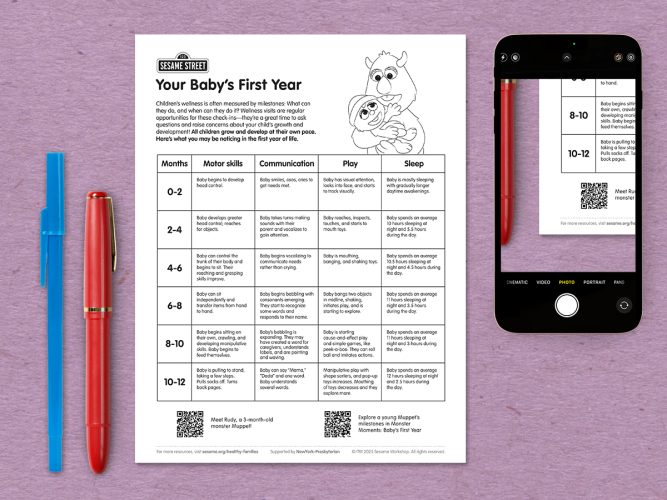
Milestones: Your Baby’s First Year
All children grow and develop at their own pace; use this chart to guide your expectations and observations so you can talk to your child’s pediatrician about questions or concerns.
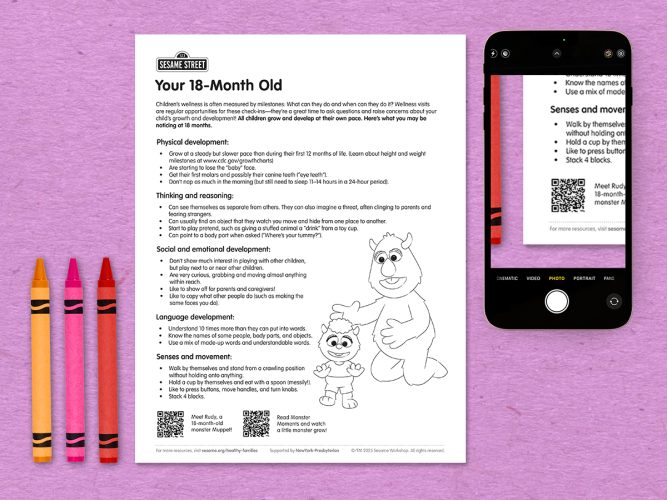
Milestones: Your 18-Month Old
All children grow and develop at their own pace; use this chart to guide your expectations and observations so you can talk to your child’s pediatrician about questions or concerns.
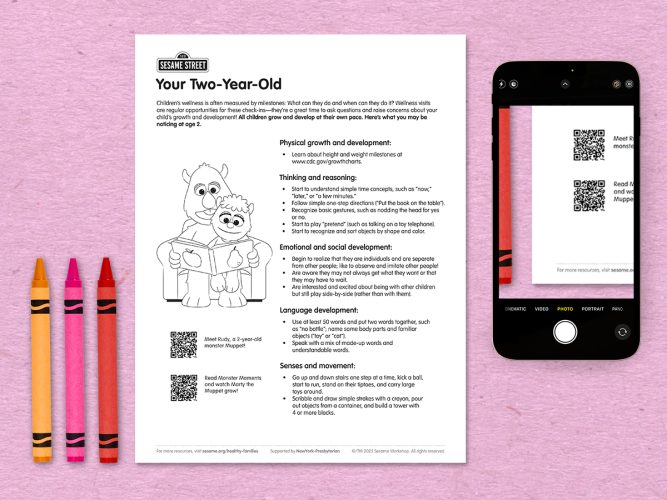
Milestones: Your Two-Year-Old
All children grow and develop at their own pace; use this chart to guide your expectations and observations so you can talk to your child’s pediatrician about questions or concerns.
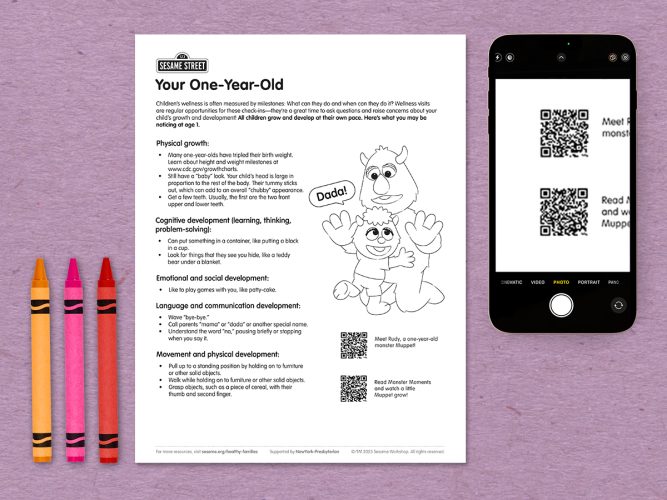
Milestones: Your One-Year-Old
All children grow and develop at their own pace; use this chart to guide your expectations and observations so you can talk to your child’s pediatrician about questions or concerns.
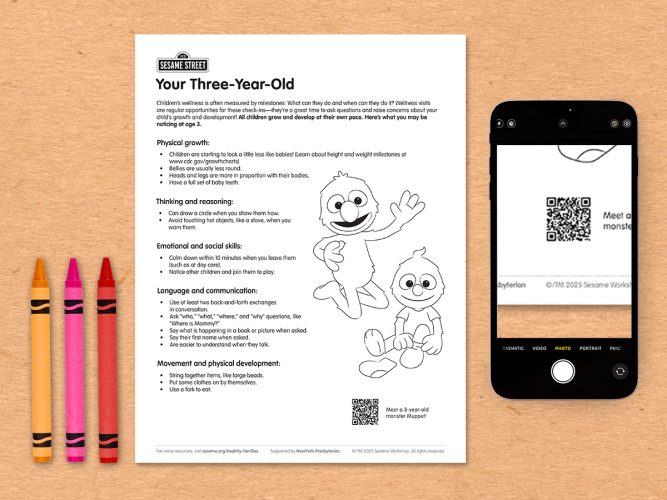
Milestones: Your Three-Year-Old
All children grow and develop at their own pace; use this chart to guide your expectations and observations so you can talk to your child’s pediatrician about questions or concerns.
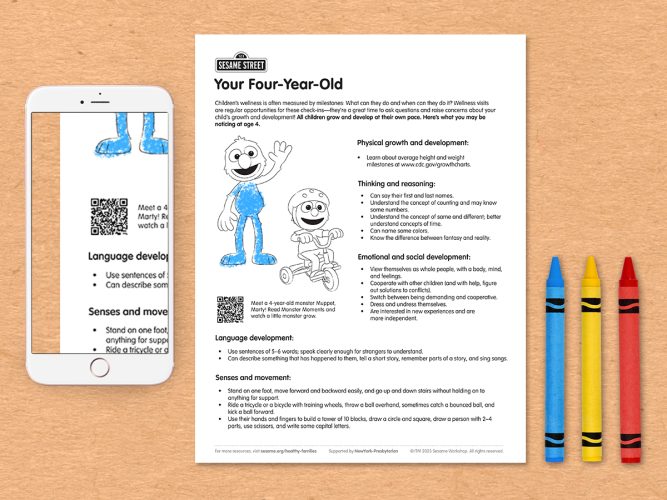
Milestones: Your Four-Year-Old
All children grow and develop at their own pace; use this chart to guide your expectations and observations so you can talk to your child’s pediatrician about questions or concerns.
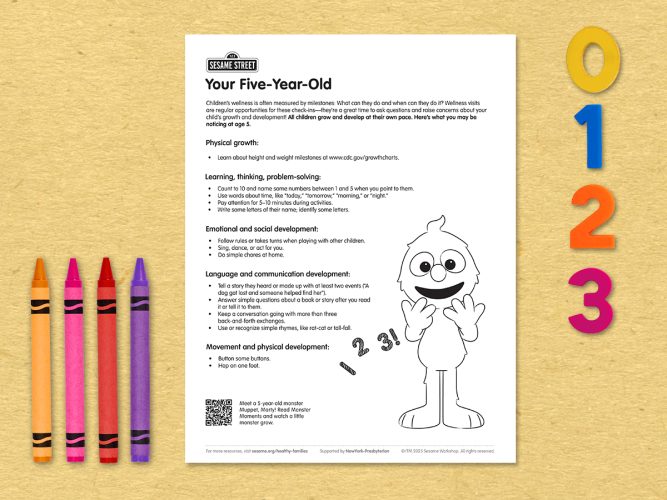
Milestones: Your Five-Year-Old
All children grow and develop at their own pace; use this chart to guide your expectations and observations so you can talk to your child’s pediatrician about questions or concerns.
